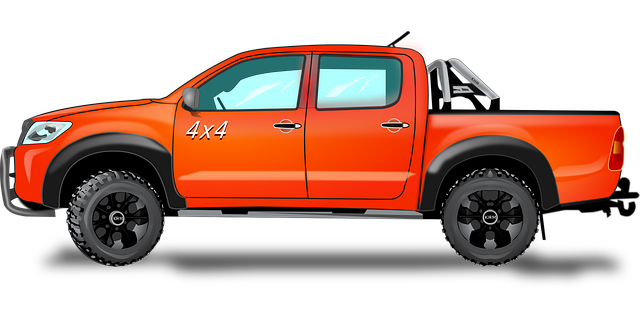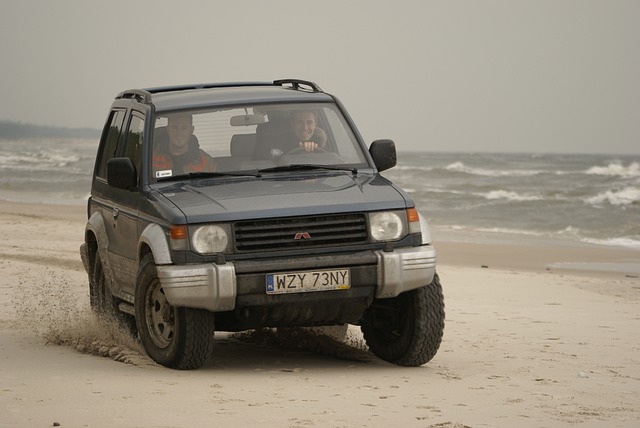Axle assemblies are crucial components in RGV-4×4 repairs, connecting wheels to drivetrains and ensuring power transfer and smooth off-road driving. Regular maintenance and timely replacement of worn parts prevent breakdowns, enhance stability, and ensure reliable performance. This comprehensive guide provides step-by-step instructions for assembling an RGV-4×4 vehicle's axle assemblies, emphasizing detail-oriented approaches, correct torque specifications, and common challenges like misalignment to help enthusiasts successfully navigate the repair process.
Axle assemblies are vital components in off-road vehicles like the RGV-4×4, playing a crucial role in its overall performance and durability. This article delves into the intricacies of axle assemblies, focusing on their function in RGV-4×4 repair. We offer a comprehensive guide, step-by-step, to assembling these intricate parts and highlight common challenges encountered during repairs. For RGV-4×4 owners, understanding these processes is essential for maintaining optimal vehicle health.
- Understanding Axle Assemblies: Their Role in RGV-4×4 Repair
- Step-by-Step Guide to Assembly and Common Challenges in RGV-4×4 Vehicles
Understanding Axle Assemblies: Their Role in RGV-4×4 Repair

Axle assemblies are fundamental components in any vehicle, playing a pivotal role in ensuring smooth and efficient movement. In the context of RGV-4×4 repair, understanding the intricacies of axle assemblies is crucial for achieving optimal performance and longevity. These assemblies facilitate the connection between the wheels and the drivetrain, enabling power transfer during driving.
In RGV-4×4 repair, identifying and addressing issues within axle assemblies is essential to restore seamless operation. Regular maintenance and prompt replacement of worn-out parts can prevent costly breakdowns and enhance overall vehicle stability. By recognizing the significance of these components, mechanics and owners alike can navigate the complexities of RGV-4×4 repair, ensuring a reliable and robust off-road experience.
Step-by-Step Guide to Assembly and Common Challenges in RGV-4×4 Vehicles

Step-by-Step Guide and Common Challenges in RGV-4×4 Assembly
Assembling an RGV-4×4 vehicle involves meticulous attention to detail, especially when it comes to the axle assemblies. Here’s a simplified guide for RGVs:
1. Prepare the Components: Begin by inspecting all parts, ensuring each axle assembly is complete and in good condition. Gather necessary tools like sockets, wrenches, and lube.
2. Mounting the Axles: Carefully align the axles with their respective positions on the vehicle frame. Securely fasten them using specified bolts, ensuring proper torque to prevent future issues.
3. Install Differential: The differential is crucial for smooth power transfer. Follow manufacturer instructions for correct positioning and tightening.
4. Connect Driveline Components: Connect the transmission output shaft to the differential, then attach the final drive gears and axle shafts. Double-check all connections for securement.
5. Lube and Test: Apply recommended lubricants to reduce friction and wear. Before hitting the road, conduct a thorough test of each assembly to ensure everything functions smoothly.
Common Challenges in RGV-4×4 Axle Assembly:
Despite their robust design, RGVs can present challenges during assembly. Keep an eye out for issues like: misalignment of axles, incorrect torque specification, and damaged components. Always refer to the vehicle’s service manual for specific instructions tailored to your RGV model. Regular maintenance and prompt attention to any unusual noises or vibrations will contribute to long-lasting performance.
Axle assemblies play a pivotal role in the smooth operation of RGV-4×4 vehicles. By understanding their function and the challenges associated with assembly, enthusiasts can efficiently tackle repairs, ensuring these rugged machines continue to conquer off-road trails. This guide provides valuable insights for navigating the intricacies of RGV-4×4 repair, empowering individuals to confidently maintain their all-terrain capabilities.



